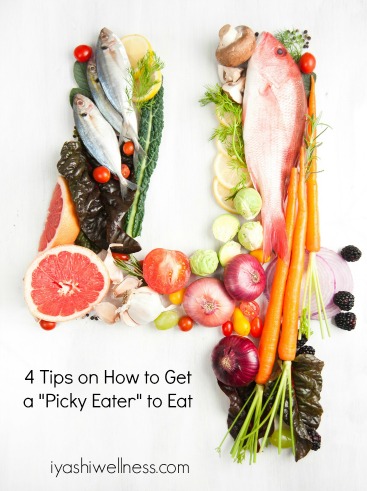This is Part 5 of my 8 Part Series on Healthy, Happy Eating for the Whole Family. Part 1: SAD DIET: ARE YOU OR YOUR CHILDREN EATING ONE? Part 2: THE YIN AND YANG OF SEASONAL EATING. Part 3: HOW TO INCREASE YOUR CHILD’S IQ AND ATTENTION SPAN WITH NUTRITION. Part 4: HOW TO GO GLUTEN FREE AND DAIRY FREE AND HAVE YOUR PIZZA AND ICE CREAM, TOO! Part 6: THE CALCIUM MYTH: IT’S NOT WHAT YOU THINK Part 7: WHY RAW FOODS FOR CHILDREN IS NOT THE BEST IDEA. Part 8: WHY ASIAN MEDICINE ROCKS FOR CHILDREN!
Mealtimes can become a nightmare if you’re trying to make healthy meals for your family, while your child demands nothing but junk foods or sweets. And in an attempt to serve healthy kid-friendly meals, it’s common for some well-intentioned parents to fall into a rut of serving too much fruit or raw foods.
In fact, according to Chinese Medicine nutritional theory, too many raw foods, fruits, and especially fruit juice (even homemade) can make your child more prone to seasonal illnesses like cold viruses and ear infections, as well as digestive complaints like stomach ache, constipation or loose stool, and even lack of appetite. This happens because the “Spleen Qi” or the energy and functions of the digestive and immune systems are not yet fully developed during childhood. Cooked foods are actually easier to digest than raw foods, and heating a food through baking, stewing, or steaming can “unlock” the nutrients in foods to make them easier for the body to absorb and assimilate. Obviously, it’s important not to overcook vegetables or fry them in polyunsaturated vegetable oils, but cooking them for a few minutes and then adding a healthy fat such as butter, coconut oil, or raw extra virgin olive oil will provide the greatest amount of absorbable nutrition.
The great news is that it’s common and completely normal for a child to go through a phase of being a picky eater. Her sense of taste is not yet fully developed, and sometimes anything that isn’t sweet seems to taste bland or bitter. There are lots of different ways to handle this and help your child get the nutrition she needs without having to force her to finish her plate of broccoli or give in and let her have cake for dinner.
First, don’t refer to your child as being a picky eater. The name could turn out to be a self-fulfilling prophecy that lasts longer than it should. Instead, simply explain to her that her sense of taste is still developing, and she may not have liked kale last week, but she may like it this week. Ask her to at least try two bites of everything. If she likes the food, find out why. Is it fun to eat? Does she like the texture? Or is there something about the taste that she particularly enjoys? Likewise, get feedback if she doesn’t like a particular food. Does it look gross? Is the texture slimy or unappealing in some way? You might be surprised by what you learn from your child if you just ask the right questions.
Second, cook with different spices to make veggies taste exciting. If your child likes pizza, you might experiment with using Italian herbs and spices – and homemade tomato sauces — on veggies and meats. (Italian herbs such as oregano also stimulate appetite and strengthen digestion.) To satisfy a sweet tooth, bake or boil sweet potatoes and add cinnamon, grass-fed butter, sea salt, and a dollop of raw honey from your local beekeeper. Sweet potatoes are also great portable foods for packing in a lunchbox or in your purse or cooler for road trips and travel.
A third point to remember is that the texture of protein foods and foods with slimy seeds can be a major issue for some children and adults. For children who do not like the stringiness of chicken or the firm texture of a steak, grinding the meat in a meat grinder or food processor and then making into nuggets, meatballs, patties, or soups is a much healthier option than relying on deli meats, cheese, liquid protein shakes, or skipping the proteins altogether. You might even be surprised to find that your child likes fish because it doesn’t have the same textural issues as land meats. Homemade fish sticks and salmon patties may also be a tasty and fun finger food to try. Okra and tomatoes can be problematic for some because of the slimy seeds. If this is an issue, just keep reintroducing them in new ways without being forceful.
A final thing to remember is that you can breathe a sigh of relief, knowing that when you buy locally grown ingredients that haven’t been shipped from thousands of miles away, they will have more vibrant colors and flavors, which will make them more appealing for children and adults alike! You might consider taking your kids to the farmer’s market so they can pick out the fruits, veggies, and meats that they would like to eat. The more involved they are in the food shopping and cooking experience, the more likely they are to eat those steamed Brussels sprouts!
Here’s a healthy portable snack recipe you can make and bring with you on those farmer’s market shopping adventures. It contains superfoods used in Chinese Medicine to promote optimal health.
SUPERHERO CRACKERS
- 2 cups of blanched almond flour
- 2 tsp Redmond Real Salt or Celtic Sea Salt
- ½ cup black sesame seeds
- ½ cup goji berries
- 2 eggs, whisked
- 2 tablespoons refined coconut oil, grass-fed beef tallow, or lard (melted in a skillet)
- In a large bowl, stir almond flour, salt, goji berries, sesame seeds, eggs and oil until well blended.
- Line two large 12 x 16 stainless steel baking sheets with parchment paper.
- Place half of the dough in the center of each lined sheet.
- Cut another piece of parchment paper and place it over one of the balls of dough.
- Roll dough out between the two pieces of parchment paper until it covers the entire baking sheet. Then remove the top paper and repeat the process with the other piece of dough.
- Cut the dough into 2-inch squares or use small cookie cutters to make fun shapes.
- Bake at 350° for 10 minutes, or until golden brown.
- Cool and store in sealed containers.

